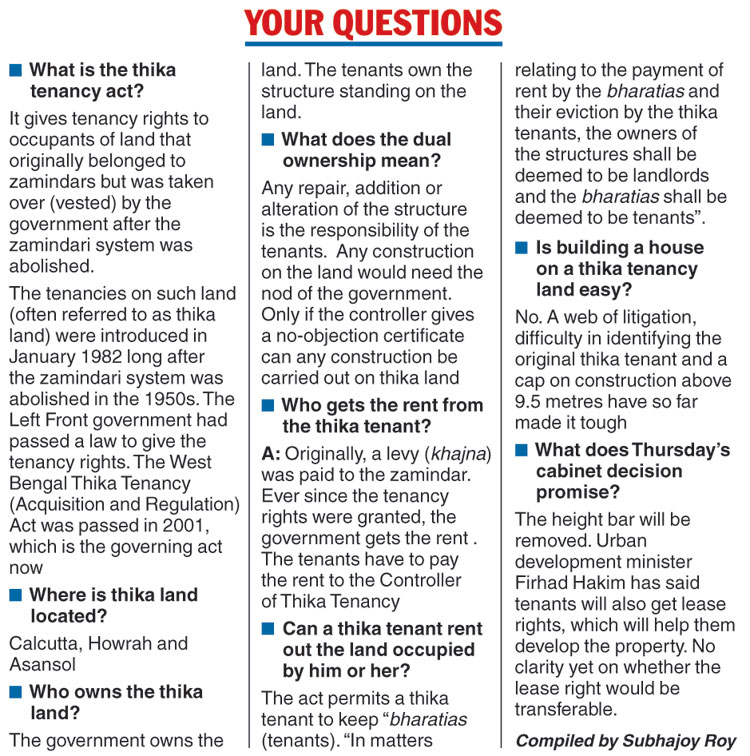The Mamata Banerjee government on Thursday cleared the decks for constructing multi-storeyed buildings on thika tenancy land, located mainly in prime locations of Calcutta, Howrah and Asansol.
The government will remove the restriction on the maximum height of buildings, set at 9.5 metres so far. It has promised to grant long-term lease to the tenants, which will help secure bank loans for developing high-rises.
The policy was approved by the state cabinet on Thursday. A committee will recommend the specific changes to the tenancy land act.
Once the law is amended, there will be no restriction on construction of multi-storeyed buildings on thika tenancy land in areas like Burrabazar, Sovabazar, Chetla and Kalighat, real estate sources said.
They expressed the hope that the policy would change the skyline of Calcutta but it is still not clear whether private players will be allowed to play any role.
With the general election looming and most of the tenants being poor, the government suggested private players would be kept out. But if tenants are given lease rights, it will be difficult to entirely shut out private investors.
Calcutta has around 2,000 acres of thika tenancy land and Howrah 517 acres. An estimate by the land and land reforms department suggests around 20 lakh people reside on such land in the state. Several big slums in south and north Calcutta are located on thika tenancy land.
“The tenants of the plots and their sub-tenants can develop multi-storeyed buildings from now on…. The cabinet removed the height cap of 9.5 metres as this will help the tenants and their sub-tenants. But it has to be ensured that the rights of both tenants and sub-tenants are protected,” education minister Partha Chatterjee said at Nabanna after the cabinet meeting.
Till now, although the tenants were allowed to sub-let, they did not have lease rights. This stood in the way of re-developing the plots as thika right is not considered a bankable asset that can fetch loans.
For instance, in Rajarhat or Sector V of Salt Lake, the government owns the land but individuals are allowed to build houses or take plots on long lease (999 years) with transfer rights. As a consequence, banks provide home loans. Transfer right is considered a bankable asset that can fetch market prices.

It is not clear whether the changes proposed for the thika tenancy land will facilitate transfer of lease right.
Some builders felt that an outright burial of the thika tenancy act would have been a better option. “These plots are densely divided among numerous tenants and sub-lessees and an absolute legal minefield. Unless this act is repealed, it may be difficult for us to develop,” a city-based builder said.
The government vowed to protect the tenants from unscrupulous operators. “There is no need for private developers or promoters…. We are very clear about the policy and if any tenant and their sub-tenant fails to develop, the government will do that for them,” urban development minister and Calcutta mayor Firhad Hakim said.
The minister said once long-term lease is given to the occupants and their sub-tenants, the civic authorities will clear building plans and allow mutation in favour of the occupants so that they can get loans from banks to develop the plots.
“If the tenants or their sub-tenants will not be able to develop multi-storeyed buildings, the state government will develop G+4 buildings and allot flats to the tenants and their sub-tenants,” the minister said, adding that beautification projects would be undertaken on unused land.










